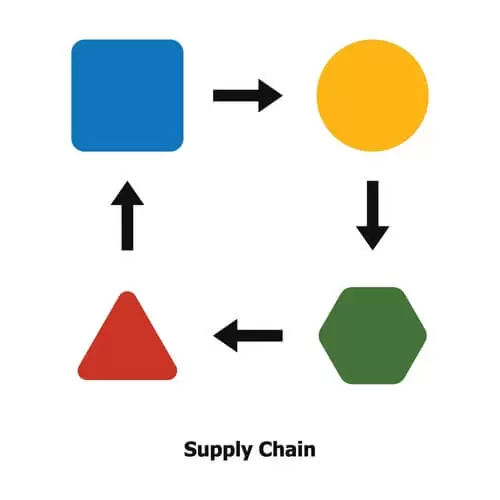The Covid-19 crisis has brought a lot of change in the way we do business thus optimizing the supply chain for some companies arise especially vividly.
As a result, many companies are re-organizing how they operate to ensure that they remain resilient to the economy’s shifting demands. In particular, supply chain leaders need to optimize their chains to ensure their workers’ safety and to safeguard their operational viability.
Quick Overlook
Steps to Take for Optimizing Supply Chain
The optimal way to improve your supply chain during Covid is to take the following steps:
- Build transparency
- Assess available inventory
- Estimate realistic final-customer demand
- Enhance production and distribution capacity
- Identify and secure logistics capacity
- Determine where supply chain issues will cause a financial impact.
While planning to optimize your supply chain, you will need to visualize all your data. This is where a mapping program like Maptive.com comes in.
Mapping software allows you to plot all the locations involved in your operation on a map so you can plan routes, identify issues, and manage risk.
Now let’s take a closer look at the steps involved in optimizing your supply chain during Covid:
Step 1: Build Transparency
Building transparency into your supply chain starts with identifying the essential components of your operations. Once you’ve determined the critical components, you can evaluate the risk of interruption from tier-two and onward suppliers.
At this point, you should be asking tier-one organizations about who and where their suppliers are and developing information-sharing agreements to identify any disruptions that tier-two and other organizations may suffer.
Additionally, you should engage with suppliers across all tiers, ensuring proper communication channels regarding lead times and inventory levels. This will ensure that you receive early warnings of any interruptions and will enable you to create a recovery plan for critical suppliers.
Step 2: Assess Available Inventory for Optimizing Supply Chain
You may be surprised at the amount of inventory that is sitting in your chain. You should estimate how much of this inventory is available, including spare parts and remanufactured stock.
Furthermore, the after-sales stock should be utilized as a way to keep production running. This will help you in capacity planning during a ramp-up period.
Step 3: Estimate Realistic Final-Customer Demand
It can be hard to estimate whether there will be an increase or decrease in demand for particular products during a crisis. However, it’s essential to assess whether demand signals from immediate customers are realistic and whether you can rely on the demand increasing, decreasing, or remaining the same.
Using your industry experience and available analytical tools, you should decide on a reliable demand signal. You should also look at the following:
- direct-to-consumer communication channels
- market insights
- internal databases
- external databases
to give you insight into the state of demand. This will help you determine the necessary supply you need to prepare for.
Step 4: Enhance Production and Distribution Capacity
Once you’ve forecasted your product demand, you need to optimize your production and distribution capacity. However, you must first ensure your employees’ safety. This means communicating with employees about infection-risk concerns and making remote and home working options available.
The next step is to evaluate the current available capacity, determining which products offer the highest strategic value while considering the health and safety of your employees, as well as the earnings potential for today and during future recovery.
Step 5: Identify and Secure Logistics Capacity
During this crisis, understanding your current and future logistics capacity is even more critical than usual. Furthermore, you will need to prioritize logistics needs concerning the capacity and time-sensitivity of product delivery.
As a result, even if you’re looking to increase production and makeup time in your value chains, you should prebook logistics capacity to lessen exposure to potential cost increases.
Step 6: Determine where Supply Chain Issues Will Cause a Financial Impact
At this time of uncertainty, you must use all available forecasting capabilities to stress test your capital requirements weekly and monthly. You will want to focus on freeing up cash locked in your value chain.
For instance, decreasing your finished-goods inventory with thoughtful targets supported by robust governance can contribute substantial savings.
Similarly, improved logistics, such as better fleet management, can defer significant capital costs without impacting customer service. You should also analyze suppliers for non-essential purchases, decreasing or eliminating these purchases.
Conclusion
Even though times are uncertain, by identifying risks to your supply chain and taking proactive steps, you can build a resilient chain for the future.
These steps should be formalized into documentation so that you remain strong no matter what crises might come your way.
